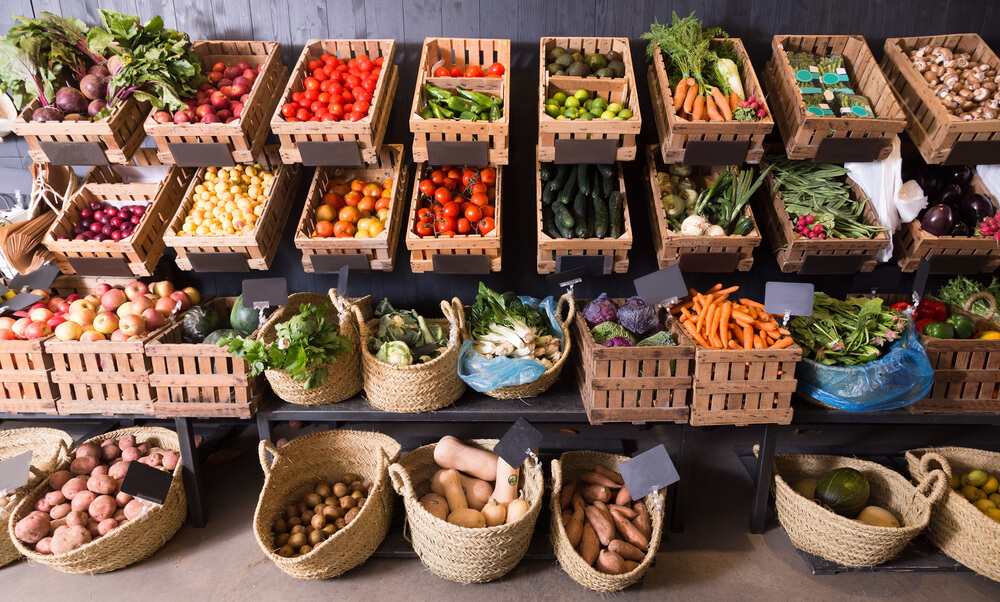Blog, General dog nutrition
The ‘Dirty Dozen’ and the ‘Clean Fifteen’ – what you need to know
More and more we’re bombarded with advertisements selling organic produce. Food that has been grown or produced without using any pesticides or chemical fertilisers.
But should you only feed your dog an organic diet? And are there other ways you can make sure your dog consumes fewer pesticides while not spending a fortune?
The answers are ‘no’ and ‘yes’ respectively.
The ‘Dirty Dozen’ and the ‘Clean Fifteen’
Every year, on behalf of the US Department of Agriculture’s (USDA) Pesticides Data Programme, scientists carry out a battery of tests on a huge number of vegetable and fruit crops. What are they testing for? The presence of pesticides – more than 100 pesticides, to be precise.
The scientists are looking to see how much and how many of these 100 pesticides are present on some of the most highly consumed fruit and veg crops. In case of interest, these tests are done after food has been prepared to be eaten, meaning the food has been thoroughly washed and if relevant, peeled.
But the results they produce can be a bit difficult to get your head around. Thankfully, ever year the Environmental Working Group summarises the USDA’s findings into two handy lists – the ‘Dirty Dozen’ and the ‘Clean Fifteen’.
The purpose of these lists is to show people which are the 12 foods that contain the most pesticides and which are the 15 that contain the least, and to allow people to make informed decisions about what they eat and what they feed their dogs.
The ‘Dirty Dozen’ 2017
- Apples
- Nectarines
- Peaches
- Cherries
- Pears
- Grapes
- Strawberries
- Tomatoes
- Celery
- Sweet bell peppers
- Potatoes
- Spinach
The ‘Clean Fifteen’ 2017
- Pineapple
- Papayas
- Mango
- Honeydew melon
- Kiwi
- Cantaloupe
- Grapefruit
- Avocado
- Sweet corn
- Onions
- Cabbage
- Aubergine
- Sweet frozen peas
- Asparagus
- Cauliflower
But why should I care?
The reason it’s important to be aware of the ‘Dirty Dozen’ and ‘Clean Fifteen’ lists is because they tell you which foods contain the most and the least pesticides respectively.
And why is that important? Because in a nutshell, pesticides aren’t very nice.
The word pesticide is a general term that’s used to describe something – either alone or in a mixture – that can kill a pest, or reduce the damage that a pest could cause. They can be physical, biological or chemical, and they can be natural or synthetic (man-made).
The ‘pests’ that they’re trying to damage could be a number of things – a fungi, bacteria, viruses, weeds or insects.
Pesticides are used by farmers and food producers to prevent their crops from being destroyed. But while the upside of this is that crops are saved and food is produced, the downside is that if a chemical or biological pesticide is used, traces of it could remain in the food after it’s been prepared for consumption.
And this – having residual pesticides on food – could potentially be dangerous to dogs who consume these foods, and potentially damage their health. Indeed, any sort of long-term, high-level exposure to pesticides could be toxic to your dog.
It could result in diarrhoea, vomiting, fever, seizures, increased heart rate or respiratory problems.
It is however important to remember that not all pesticides are created equal – some are more dangerous than others.
So shouldn’t I just buy organic?
Learning that you could inadvertently be feeding your dog pesticides which can potentially be dangerous to their health might make you want to run to the nearest organic food shop and stock up.
But you don’t need to. The point of the ‘Dirty Dozen’ and ‘Clean Fifteen’ lists aren’t to scare people into buying organic produce. It’s to allow them to make informed decisions about what foods they are eating themselves and feeding their dogs.
And because organic food is quite expensive and not always readily available to everyone, these lists provide an alternative option. They allow those who can’t afford to always – or ever – buy organic to make the healthiest choices for them and their pets given their circumstances. That can only be a good thing.
Did you find our blog interesting? Feel free to share by using the super easy share buttons below.

